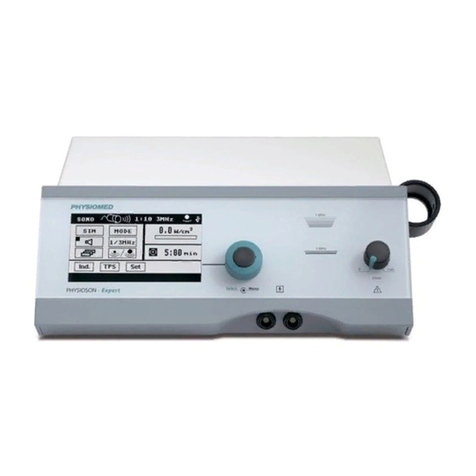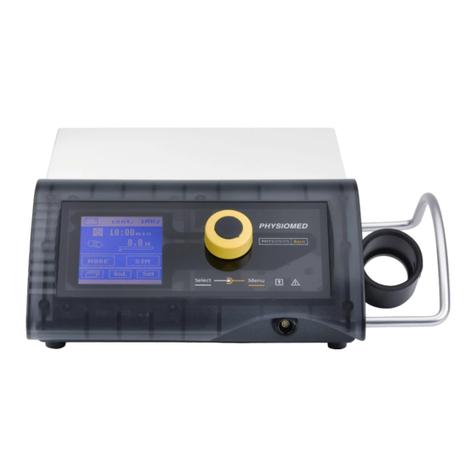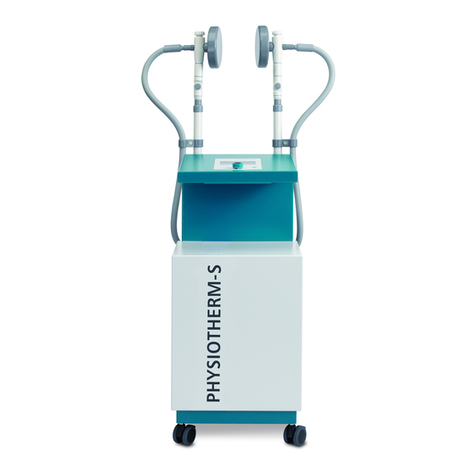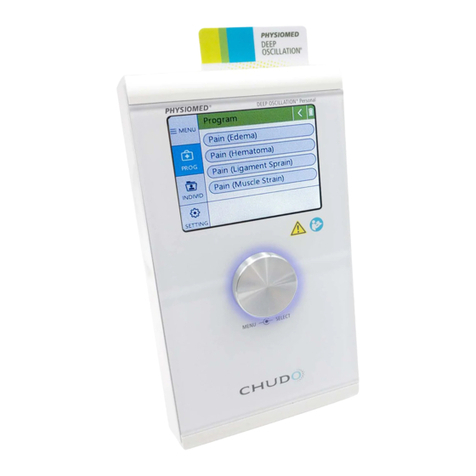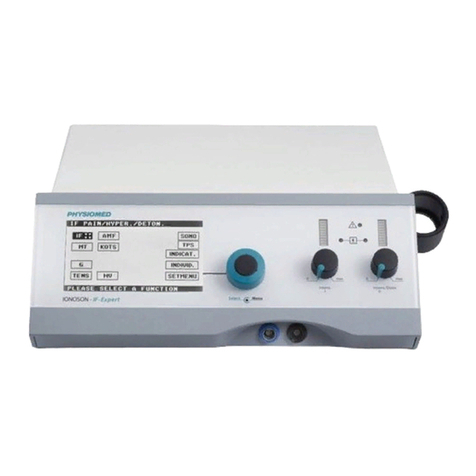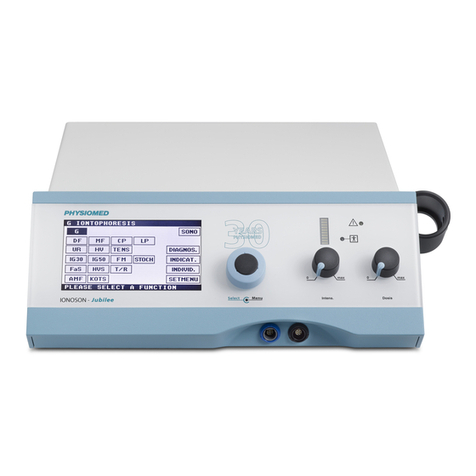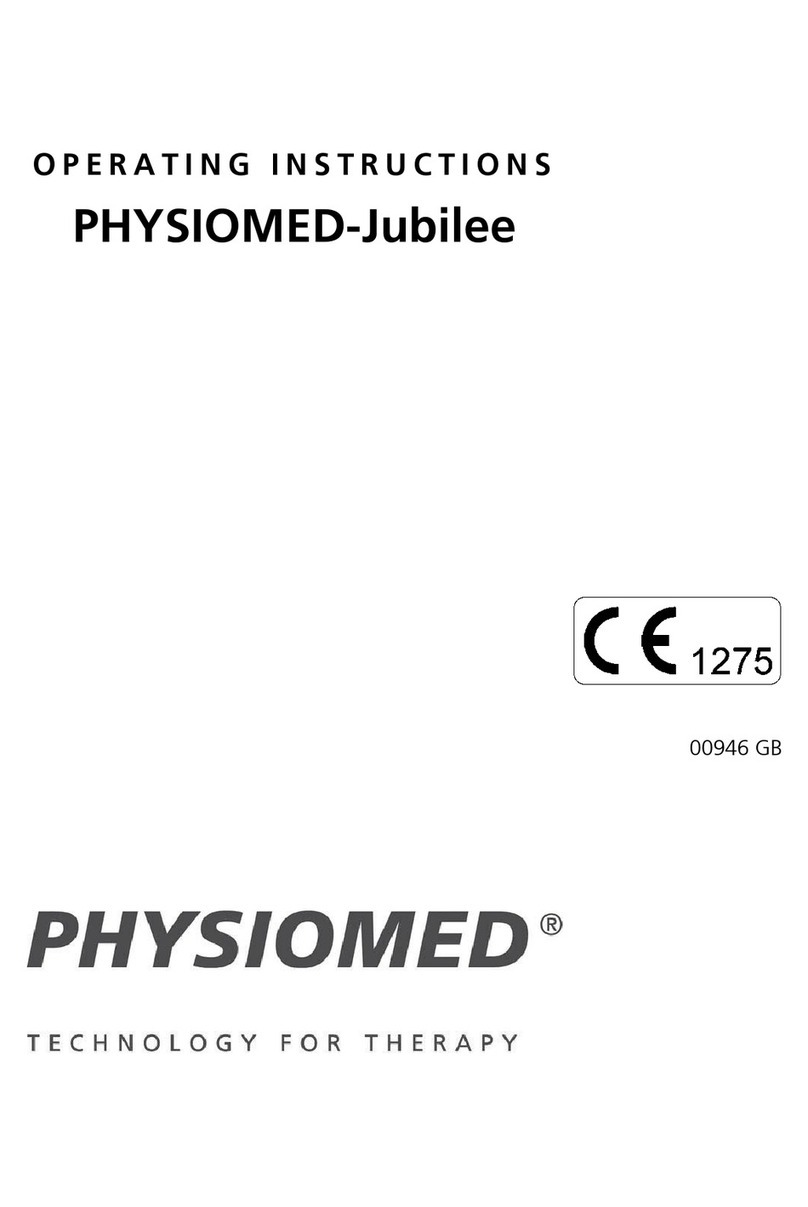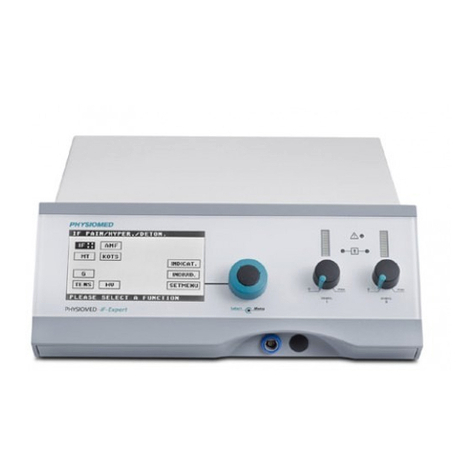
3.3.6 (LP) Diadynamic Current Modulé en Longues Périodes . . . . . . . . . . . . . 19
3.3.7 (UR) Ultra Stimulation Current. . . . . . . . . . . . . . . . . . . . . . . . . . 20
3.3.8 (HV) High-Voltage Current . . . . . . . . . . . . . . . . . . . . . . . . . . . 21
3.3.9 (TENS) Transcutaneous Electric Nerve Stimulation. . . . . . . . . . . . . . . . 23
3.3.10 (MENS) Electric Nerve Stimulation with Microcurrent . . . . . . . . . . . . . . 24
3.3.11 (IG30) Pulse Galvanization 30 . . . . . . . . . . . . . . . . . . . . . . . . . . 25
3.3.12 (IG50) Pulse Galvanization 50 . . . . . . . . . . . . . . . . . . . . . . . . . . 26
3.3.13 (FM) Frequency-Modulated Current. . . . . . . . . . . . . . . . . . . . . . . 27
3.3.14 (STOCH) Stochastic Current . . . . . . . . . . . . . . . . . . . . . . . . . . . 29
3.3.15 (FaS) Faradic Surge Current . . . . . . . . . . . . . . . . . . . . . . . . . . . 30
3.3.16 (T/R) Pulses with Adjustable Parameters. . . . . . . . . . . . . . . . . . . . . 32
3.4 Medium Frequency Current Modes . . . . . . . . . . . . . . . . . . . . . . . 33
3.4.1 (IFM) Modulated Interference Current . . . . . . . . . . . . . . . . . . . . . 33
3.4.2 (AMF) Amplitude-Modulated Medium-Frequency Current . . . . . . . . . . . 34
3.4.3 (KOTS) Medium-Frequency Muscle Training. . . . . . . . . . . . . . . . . . . 36
Chapter 4 Operation of the instrument . . . . . . . . . . . . . . . . . . . . . . . 38
4.1 Mains and Battery Operation . . . . . . . . . . . . . . . . . . . . . . . . . . 38
4.1.1 Notes on Handling the Batteries. . . . . . . . . . . . . . . . . . . . . . . . . 38
4.1.2 EconomyMode................................. 39
4.2 Start-up of the Instrument. . . . . . . . . . . . . . . . . . . . . . . . . . . . 39
4.3 FunctionCheck................................. 39
4.4 MonitoringNotes................................ 39
4.5 Constant Current Operation . . . . . . . . . . . . . . . . . . . . . . . . . . 40
Chapter 5 Therapy with Stimulation Current . . . . . . . . . . . . . . . . . . . . 41
5.1 GeneralInformation............................... 41
5.2 Safety Precautions when Attaching Electrodes . . . . . . . . . . . . . . . . . 41
5.2.1 Modes of Attaching the Electrodes . . . . . . . . . . . . . . . . . . . . . . . 42
5.3 Safety Precautions for Stimulation Current Intensity . . . . . . . . . . . . . . 42
5.3.1 Recommended Intensities . . . . . . . . . . . . . . . . . . . . . . . . . . . . 42
5.4 Preparations and Attaching the Electrodes . . . . . . . . . . . . . . . . . . . 43
5.5 Therapy Using Low-Frequency Current Modes . . . . . . . . . . . . . . . . . 44
5.5.1 Monophase and Biphase Currents . . . . . . . . . . . . . . . . . . . . . . . 44
5.5.2 Iontophoresis .................................. 44
5.5.3 Pain Therapy, Hyperaemisation, Detonisation. . . . . . . . . . . . . . . . . . 46
Table of Contents PHYSIOMED ELEKTROMEDIZIN AG
ii IONOSON-Basic
